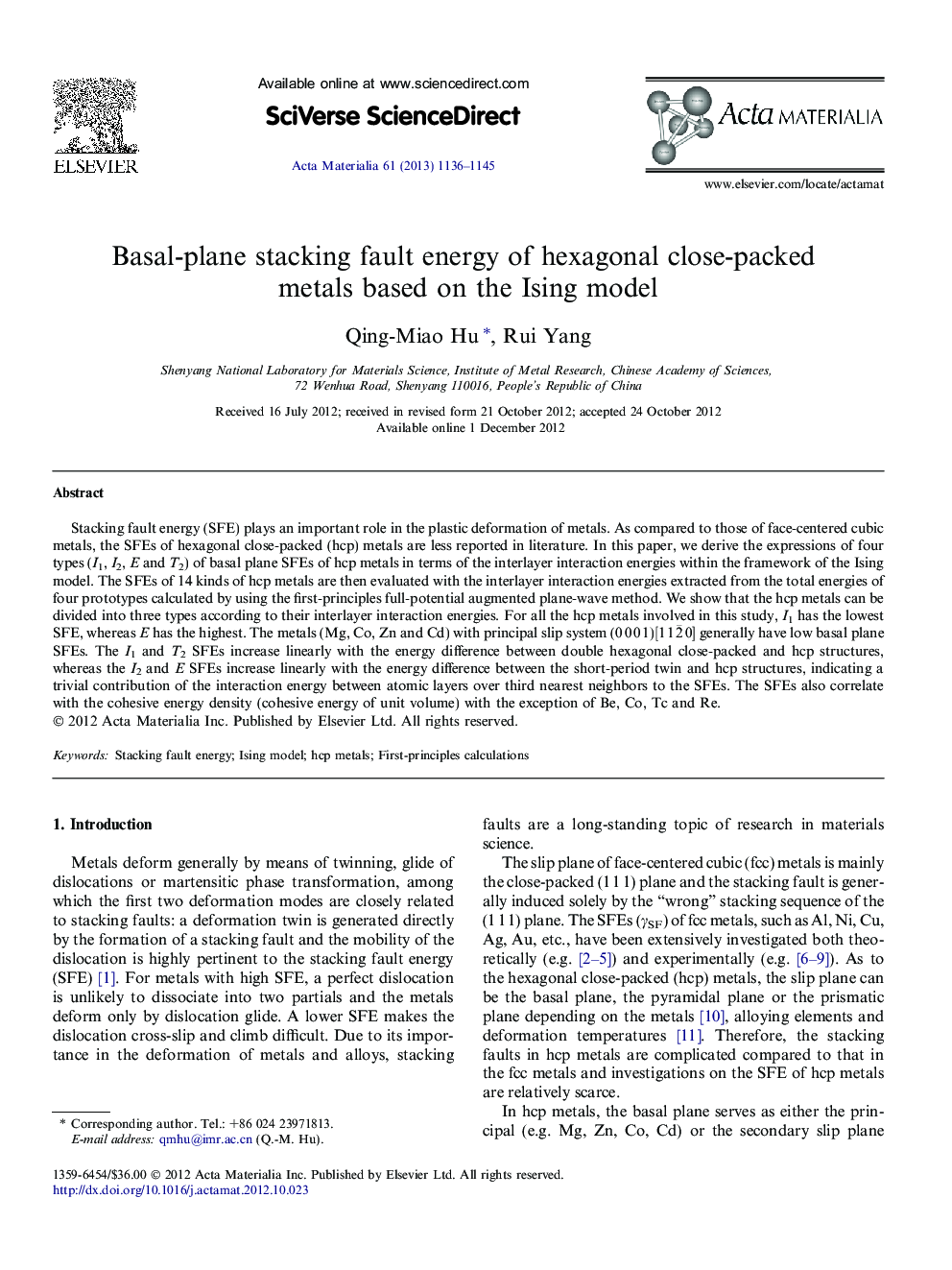| کد مقاله | کد نشریه | سال انتشار | مقاله انگلیسی | نسخه تمام متن |
|---|---|---|---|---|
| 1446344 | 988608 | 2013 | 10 صفحه PDF | دانلود رایگان |

Stacking fault energy (SFE) plays an important role in the plastic deformation of metals. As compared to those of face-centered cubic metals, the SFEs of hexagonal close-packed (hcp) metals are less reported in literature. In this paper, we derive the expressions of four types (I1, I2, E and T2) of basal plane SFEs of hcp metals in terms of the interlayer interaction energies within the framework of the Ising model. The SFEs of 14 kinds of hcp metals are then evaluated with the interlayer interaction energies extracted from the total energies of four prototypes calculated by using the first-principles full-potential augmented plane-wave method. We show that the hcp metals can be divided into three types according to their interlayer interaction energies. For all the hcp metals involved in this study, I1 has the lowest SFE, whereas E has the highest. The metals (Mg, Co, Zn and Cd) with principal slip system (0 0 0 1)[112¯0] generally have low basal plane SFEs. The I1 and T2 SFEs increase linearly with the energy difference between double hexagonal close-packed and hcp structures, whereas the I2 and E SFEs increase linearly with the energy difference between the short-period twin and hcp structures, indicating a trivial contribution of the interaction energy between atomic layers over third nearest neighbors to the SFEs. The SFEs also correlate with the cohesive energy density (cohesive energy of unit volume) with the exception of Be, Co, Tc and Re.
Journal: Acta Materialia - Volume 61, Issue 4, February 2013, Pages 1136–1145